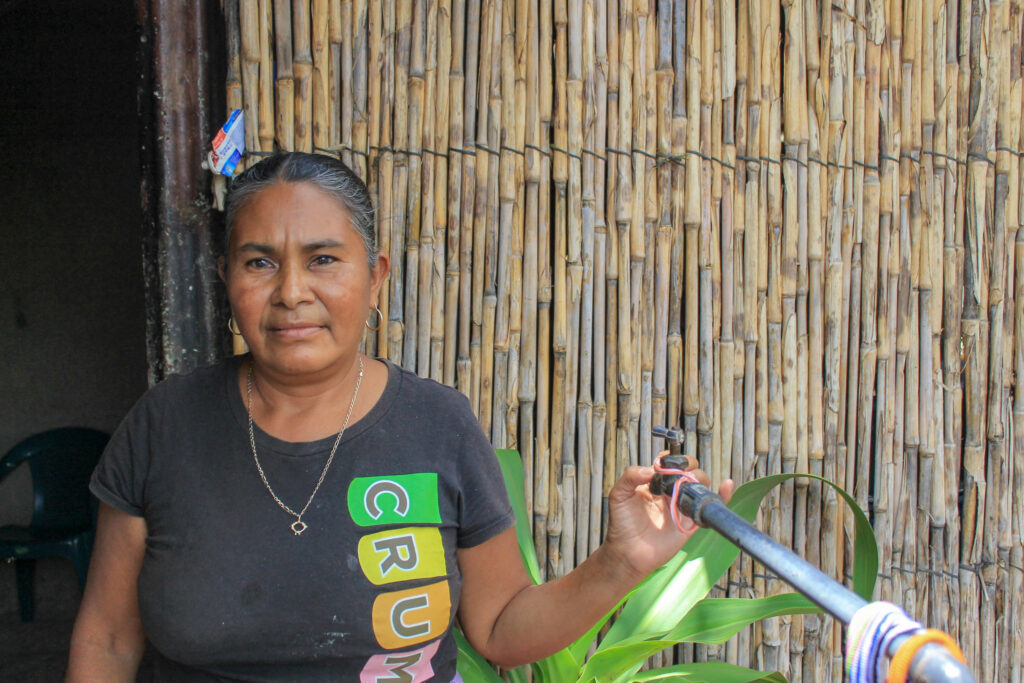Hortensia Olgadez wakes up early to gather firewood. In the small Guatemalan village of La Flor, two hours from Guatemala City, few households have gas or electricity to cook.
Her kitchen is modest—adobe walls are supported by thin wooden boards and a dirt floor. A small, rectangular stone mortar (known locally as metate), which Hortensia uses to thresh maize, rests against a wall.
The morning is busy; she prepares breakfast, sends her family off to school and work, and cleans the house. Especially during planting season, her time is precious. She walks two hours to bring lunch to her husband and children—maize tortillas accompanied by beans—crops most families in the area cultivate and consume daily.
Hortensia’s daughters are part of a study that seeks to examine the effect on their health of consuming a new high-iron bean variety known as ICTA Chortí. An estimated 47 percent of Guatemalan children under five and 25 percent of women of reproductive age suffer from anemia; poor diets lacking in iron are a major cause.
Scientists used conventional crop breeding to increase micronutrient levels in the beans so that regular consumption improves nutrition and health. The process, called biofortification, develops crops rich in nutrients for consumers with agronomic characteristics like drought and disease resistance valued by farmers. It is considered a sustainable way to bring micronutrients to populations with limited access to diverse diets.
“This study is very important because the effect of nutrition and health interventions must be evaluated in real world situations,” said Dr. Erick Boy, head of nutrition at HarvestPlus. “This gives us a better idea of their impact and what sorts of factors and preferences could affect them.”
The researchers seek to identify household consumption habits, planting preferences, and the prevalence of anemia among adolescents in eastern Guatemala. Adolescents are particularly vulnerable to iron deficiency because of periods of rapid growth, the onset of menstruation, and poor dietary habits. Addressing adolescent iron deficiency is crucial to ending the intergenerational cycle of malnutrition.
“In the beginning, one of my daughters didn’t want to eat this bean, but I told her: ‘you must try it,’” Hortensia said. “Maybe this will help. This bean is to me a blessing from God.”
Hortensia’s family plants and consumes beans several times a week. Participating in the study was an easy decision because it was a simple way to improve her family’s health. Seeds were delivered in 2016 to families in 119 communities to grow and eat. When severe drought impacted the harvest, researchers delivered more in May 2018.
After consuming ICTA Chortí iron beans for several months, she is excited. “This bean is really great. Besides being more nutritious, I like that it requires less cooking time. When I didn’t have ICTA Chortí, I bought another bean in nearby stores, but even if I cooked that bean for an hour, it didn’t soften. This new bean is ready in 30 minutes.”
The team’s final survey with the 1,176 participating families measured the socioeconomic benefits generated by the production and commercialization of this new bean.
This research is carried out by the Institute of Agricultural Science and Technology, the Institute of Nutrition of Central America and Panama, and HarvestPlus, a program improving nutrition and public health by developing and promoting biofortified food crops. It is supported by the Federal Ministry for Economic Cooperation and Development of Germany (BMZ-GiZ).
